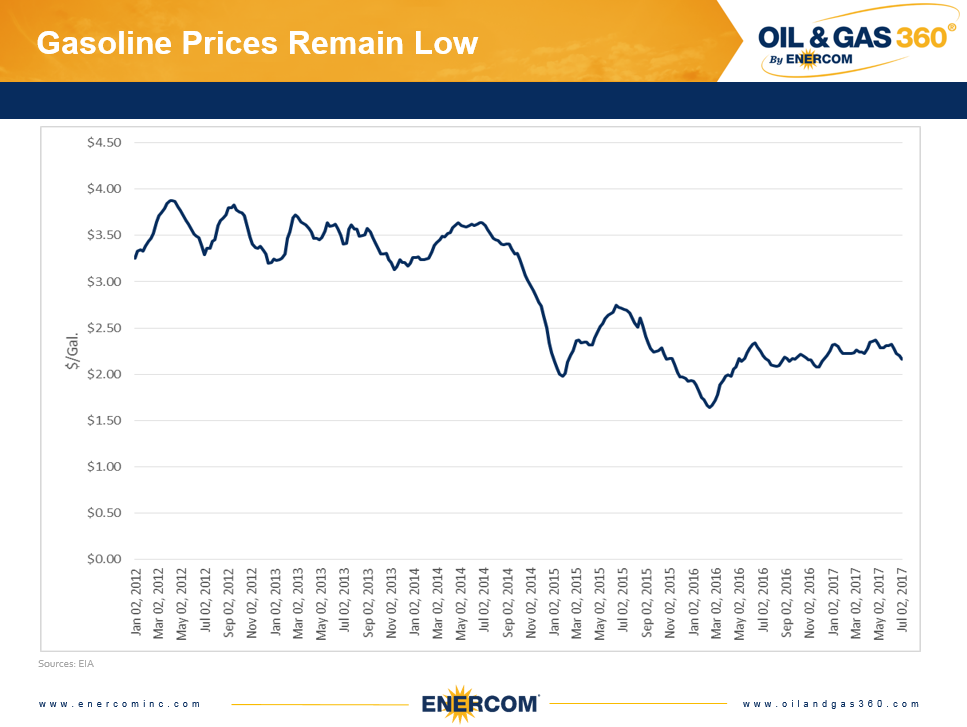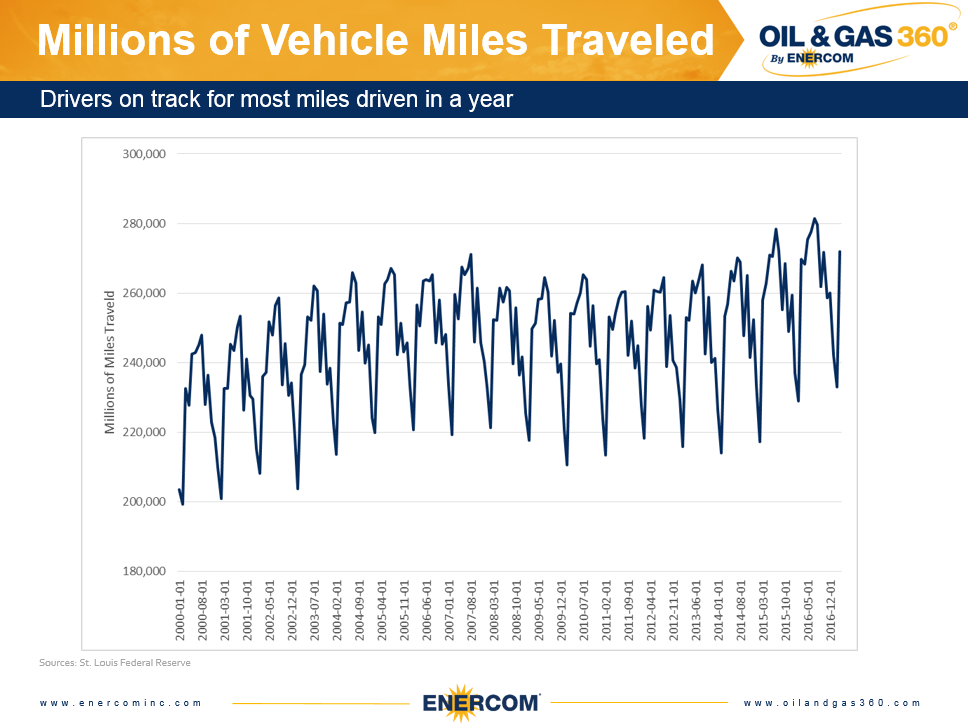Drivers traveled approximately 272 million miles in March, the most on record for the month – represents about 13 million gallons of gasoline consumed by vehicles on U.S. highways in March
The Fourth of July traditionally marks the beginning of the summer driving season, and with gasoline prices lower than in years past, U.S. drivers are set to travel more miles than ever before. Gasoline prices have remained low along with crude oil since concerns about the supply glut began at the end of 2014.
Information from the Federal Reserve Bank of St. Louis shows that March 2017 – typically the first month to show a spike in vehicle miles traveled (VMT) – were the highest on record at approximately 272.0 million. The next highest VMT spike in the month of March came last year with approximately 270 million VMT recorded by the St. Louis Fed.
July tends to be the month with the most VMT, based off information from the St. Louis Federal Reserve. VMT climbed from 270 million in March of last year to approximately 281.4 million VMT in July of 2016, up approximately 4% from four months before. Looking at the last five years, VMT rose approximately 5% from March to July of each year as summer driving demand increased.
Assuming there will be roughly a 5% increase from March of this year to the July driving and consumption figures, VMT for this month would be approximately 285.6 million, the most ever recorded by the St. Louis Fed.
Total fuel consumption expected to continue growing
The Energy Information Administration expects that demand for motor gasoline and distillate fuel oil will continue to increase this year and next. Demand for jet fuel is expected to decline slightly, but total consumption of the three fuels is predicted to reach approximately 20.6 MMBOPD in 2018 from 20.0 this year, according to the EIA.
Continued demand growth, along with increasing VMT year over year indicates that demand for crude oil will continue to grow as well. Crude oil inventories remain well above five-year averages, but increasing demand for crude and refined products does offer some positive news as prices remain below $50 per barrel.









